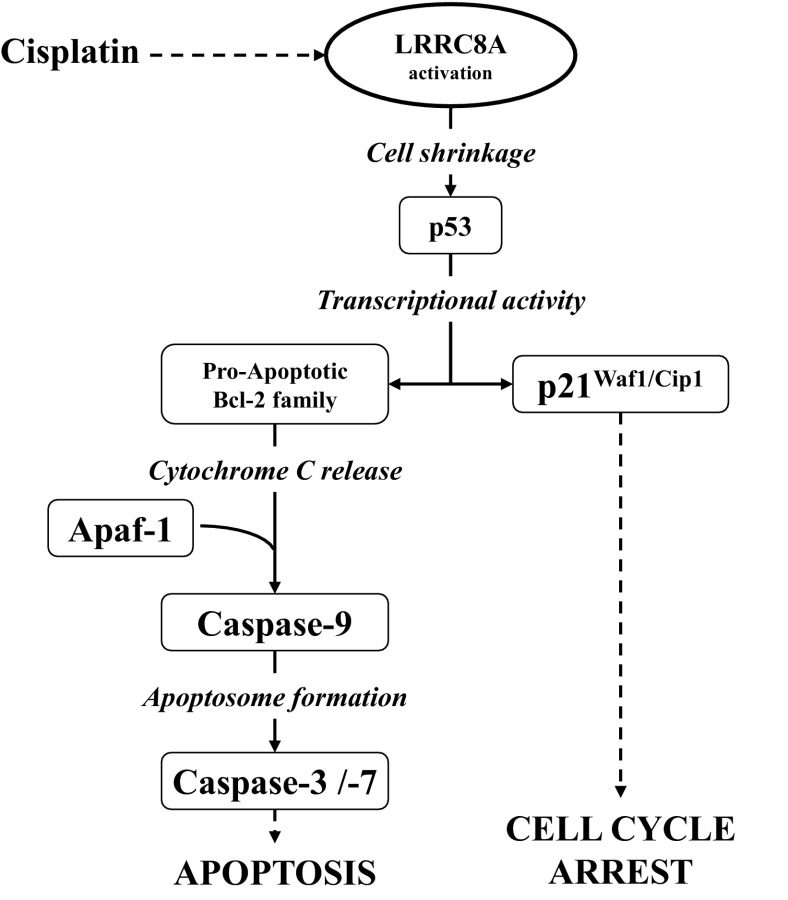Fig. 12.
Role of LRRC8A in cell signaling to apoptosis/cell cycle arrest via the intrinsic, volume sensory, and extrinsic apoptotic pathway. Induction of apoptosis and cell cycle arrest via the intrinsic cell death pathway is generally elicited by cellular stress as DNA damage (adducts and cross-links). Induction of apoptosis by Cisplatin involves activation of the kinases ATM/ATR (not shown) and activation/increased protein expression of LRRC8A. The dashed line between DNA damage and LRRC8A activation indicates that the precise signaling event is unknown. Activation of LRRC8A causes cell shrinkage (apoptotic volume decrease), which directly signals to the transcription factor p53. Increased stability and activation of p53 increase the gene expression of both p21 and Bax. Increased expression of p21 leads to G1/S and G2/M cell cycle-arrest through blockage of cyclin-dependent kinase 1 and 2 (CDK-1 and -2), and increased expression of Bax leads to increased mitochondrial outer-membrane permeabilization, cytochrome c release, activation of Caspase-9, and thus activation of executer caspases (e.g., Caspase-3 and -7).

